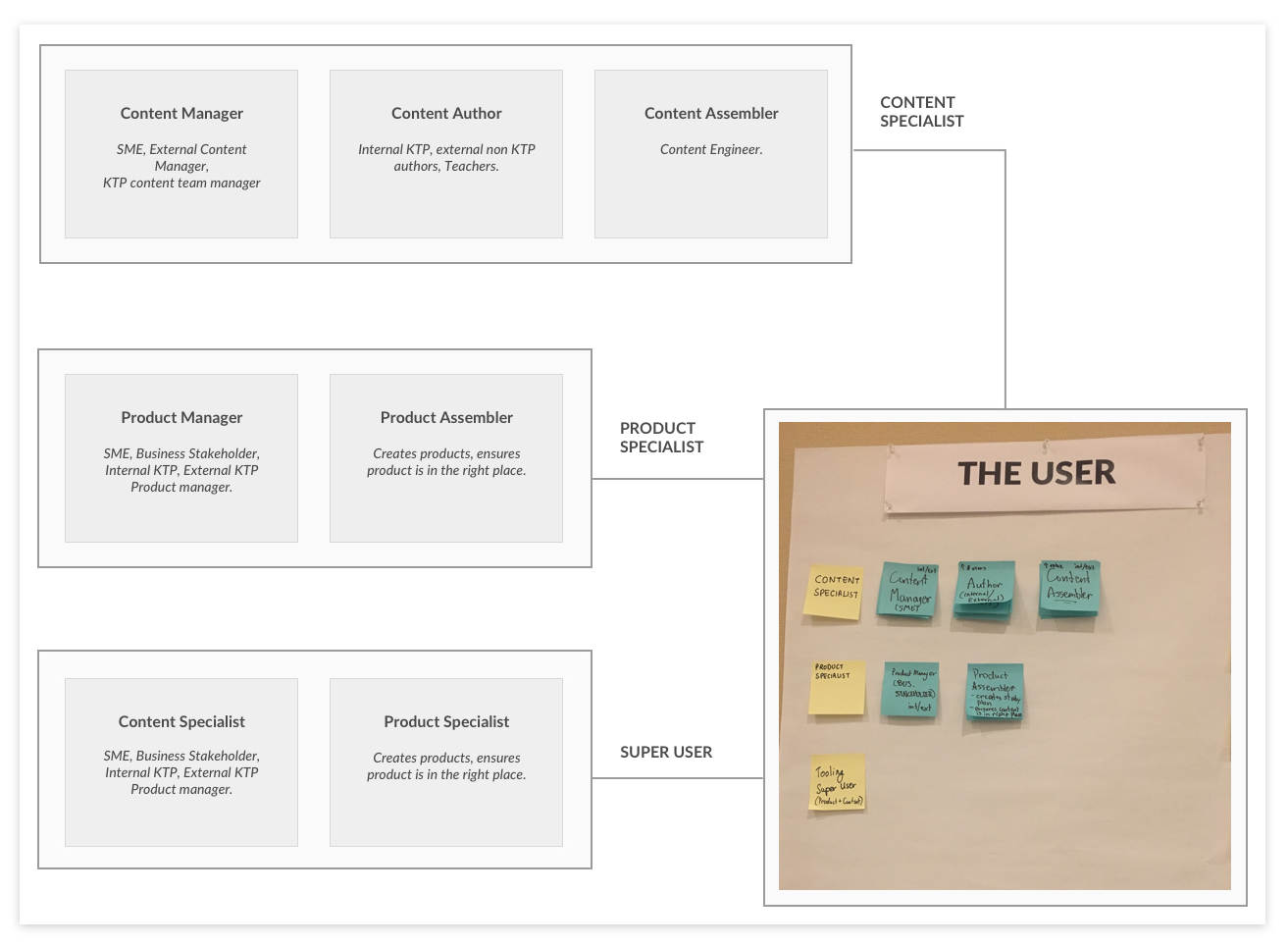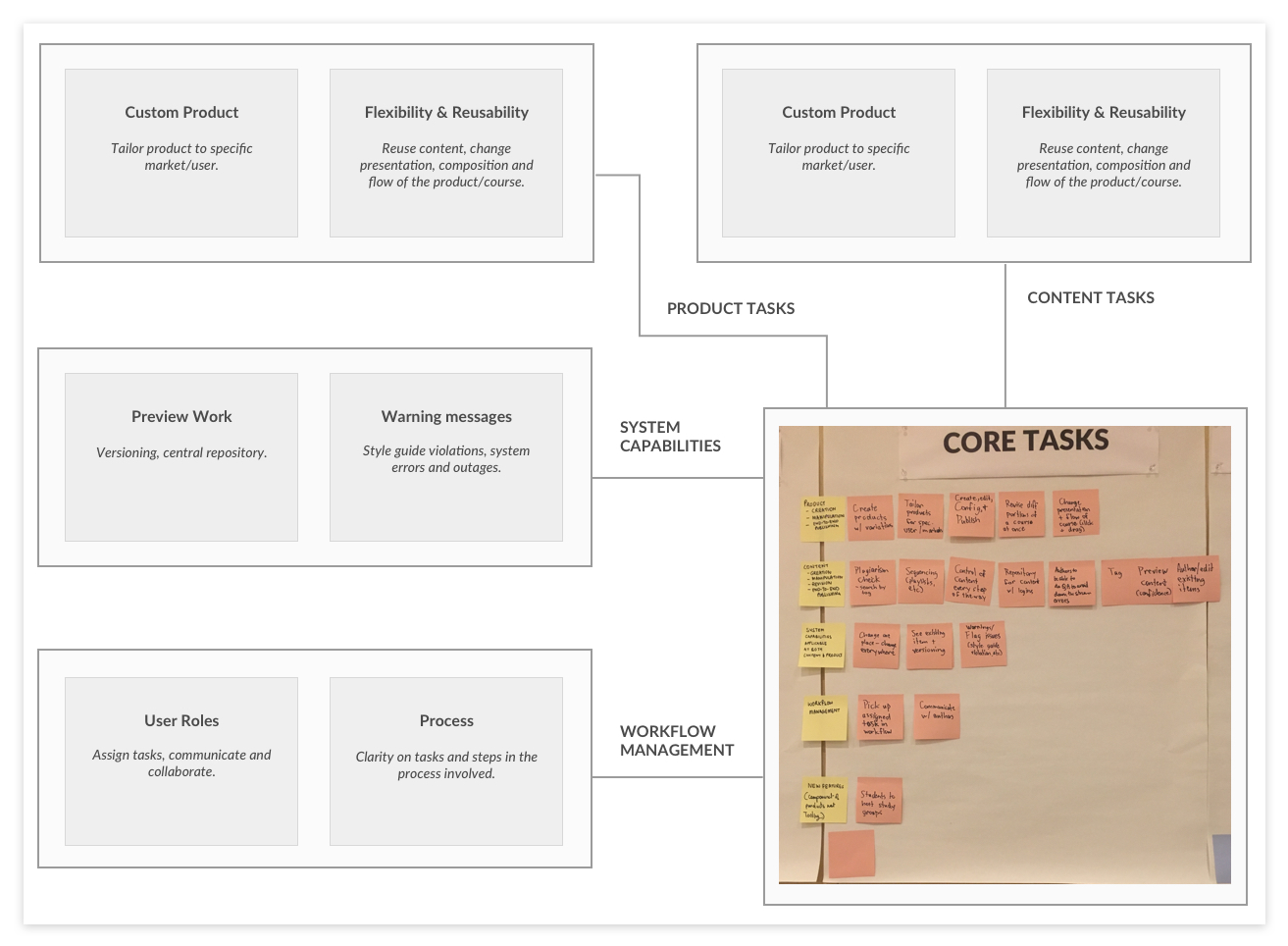Kaplan is a platform company that offers a marketplace of learning products. In this project, I created a strategy for a content and tooling platform that would support the products in the marketplace, by offering tools built for efficiency, ease-of-use and speed-to-market. This platform now serves as an alternate revenue stream for the organization.
My mission on this project was to steer the organization away from a feature driven project to guiding a strategic initiative by way of the recursive design methodology. With this mission, I was able to design a platform concept that was geared toward increasing speed-to-market and creating a product publishing process that is autonomous, efficient and less prone to errors.
Concept Car Prototype
The concept car prototype was my way of implementing the recursive design strategy. The idea of a concept car (taken from the automobile industry) is to create a high-level design that is the summation of all user needs and business expectations. Just like you never see the concept car on the road, this prototype was not built for the purpose of being implemented. The purpose of this concept car was to serve as a north star to guide product decisions. By way of this prototype, the product and the engineering teams were able to identify design use cases and create a product roadmap.
Additionally, this helped align internal and external teams on the meaning and purpose of this project.
BEHIND-THE-SCENE
My approach to this project was to build an understanding of why there was a need for a project like this in the organization.
Situation Analysis: End-to-End Product Publishing User Experience Map of Current Situation
Current Situation
Through a series of interviews, one-on-one's and system walkthroughs, I created the end-to-end product publishing user experience map for Kaplan. I learnt that there were opportunities in process, technology and emotional spaces of this workflow. Key highlights:
# of Handoffs There were an exceptional number of handoff in the process.
Roles Involved There were multiple roles involved in simple tasks like content authoring - from BA, product owners, engineers to members of the content teams and the content writers.
Time in efficiencies Multiple roles and steps involved in the process led to a lot of time inefficiencies.
This deliverable acted as primer for the product vision workshop that I ran. This exercise served to advocate for the needs of the perceived users of the tooling platform.
Product Vision Workshop
The goal of the product vision workshop was to get organizational members involved in product vision definition. Collectively, we set out to define the core personas, tasks and value proposition of our project. I facilitated this workshop with support from my talented colleague Andre De La Cruz.
Participants for this workshop - Product Owners, Content Managers, Content Engineers, Learning Science, Data Science and some internal stakeholders. This was the vision statement:
'In 5 years, we would like to enable internal Kaplan users to use Tooling to autonomously, confidently and rapidly, create, modify and publish learning products.'
Hypothesis Based Approach
I used participatory design exercises with the content creators (the core user of the tooling platform as defined by the product vision workshop)
This helped me create wireframes for the concept car prototype. The concept car prototype helped in incorporating hypothesis that I validated as roadmapped.





